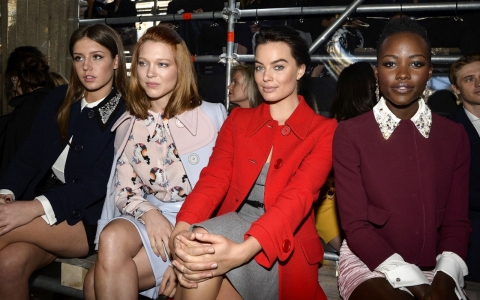Everyone loves graham crackers and s’mores, even gay people and minorities.
That’s what Honey Maid wants consumers to know with their latest ad, "This is wholesome." The ad features a gay couple with their newborn baby, as well as an interracial family and another family with a heavily tattooed father.
Honey Maid, which is owned by snack food and beverage giant Mondelez International, is just the latest brand to feature a more "modern family" in their advertising.
Deena Fidas, workplace project director at the lesbian, gay, bisexual and transgender advocacy group Human Rights Campaign, said more inclusive advertising goes hand in hand with more inclusive workplaces.
"Today a majority of the Fortune 500 companies have an LGBT inclusive internal policy, and many of them are capitalizing on that," Fidas said. "It makes a difference when you have a gay marketing exec who is prized and well respected within the company," in terms of the type of advertisements consumers will see, she said.
Companies are gradually including gay, interracial and other non-traditional couples in their advertising, a sign they are aware of the growing acceptance of the non-traditional family among the American public.
While much of the feedback online for the ads is positive, a vocal minority has expressed a difference of opinion. Biblical quotes, arguments between commenters and threats of a boycott are a frequent presence in the comments section of many, if not all, of these ads.
But Fidas told Al Jazeera companies, by and large, aren’t worried about it. That may be because the LGBT community, she said, has an estimated buying power of $830 billion. A business could be making a mistake not running ads targeting the gay demographic, she added.
"The difference between hyperbolic protests against an ad versus a company’s bottom line continues to favor that trend of equality," Fidas said. "Apple, Microsoft, Google — all these tech giants have been publicly in support of LGBT equality. If you were to boycott them, you’d be left with a pen and a pad of paper."
It’s not just ads featuring gay people that can cause a stir.
Coca-Cola ignited a social-media firestorm with its Super Bowl commercial featuring children of different races singing "America the Beautiful" in their native languages. And Cheerios received its share of backlash when the cereal brand featured an interracial family in one of its commercials.
Association of National Advertisers President Bob Liodice pointed out that there will always be people who take issue with ads that deviate from what is perceived as "traditional."
"You’re never going to get unanimity in support. Just on the surface, I think we’d be naive to think there doesn’t exist some degree of racial and sexual orientation concerns that exist in America," Liodice said.
"We’ve got 300 million people; many who have long memories to times when you couldn’t have an interracial couple hold hands, not to mention a gay or lesbian couple."
Companies have also gotten bolder about taking a stand when they are criticized for their ad choices.
After a few online commentators attacked Honey Maid over its commercial, the company responded with a second, longer online video rebuffing the criticism.
A company featuring so much diversity in its ads isn’t new, but standing up for said commercial is, said Bob Witeck, President and founder of Witeck communications.
Witeck was behind getting big companies to place some of the first LGBT advertisements in the mainstream media, not just in niche publications or media outlets tailored toward that community.
Witeck referenced an Ikea commercial from 1994 as an example of early mainstream LGBT advertising. It was the company's first advertisement featuring a gay couple, and while it was groundbreaking at the time, Witeck said the company did what many others of the era did when the ad created buzz: They dodged.
"A lot of advertisers then didn’t own up," to their LGBT commercials Witeck said. "If they did an ad like this, they wouldn’t say they were proud of it or that it represented what they believe as a company. They'd say 'oh, our ad agency did that' or 'we have no comment on that; we don’t know if that person was intended to be gay.'"
That’s a very different approach from the 2013 Amazon Kindle commercial, the first mainstream ad featuring the use of the word “husband” between two men. The company is on record as being in support of same-sex marriage — Amazon CEO Jeff Bezos even donated $2.5 million to a campaign defending same-sex marriage in Washington state in 2012.
Coca-Cola stood by its message, and Cheerios isn't backing down either; the cereal company made several more commercials featuring the same interracial family.
Targeted and multicultural marketing has always been around, Liodice said, but not the way consumers see them today.
Major companies aren’t interested in advertising to the America of yesterday, he said. They want to reach the younger demographic — the people who will be buying their brand for 15 to 20 years.
Younger people are far less judgmental, according to Liodice. It also doesn’t hurt that America is projected to get browner.
According to census forecasts, whites will make up less than 50 percent of the U.S. population by 2050.
"That is the modern family," Liodice said. "It’s a family of color, of diversity, of sexual orientation diversity."

Lancome's choice offers hope to black women who feel alienated by predominantly white beauty ideal, advocates say

Analysis: A tone-deaf joke from ‘The Colbert Report’ and resulting backlash show the pitfalls of Twitter activism






Error
Sorry, your comment was not saved due to a technical problem. Please try again later or using a different browser.